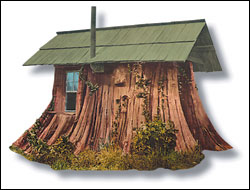It was great to see Seattle-based correspondent Timothy Egan back in the pages of The New York Times last week. After a long absence, his byline reappeared above a story on how cities like Portland and Seattle are becoming towns without children (“Vibrant Cities Have One Thing Missing: Children,” March 24). Apparently, it takes an urban village to drive families away. Seattle, in fact, ranks second only to San Francisco on the All-American Kidless Cities list.
The density freaks—who promote urban design models that cater mostly to well-heeled gentrifiers—tout a vision that often leaves families out of the equation. Families are priced out, too, as our model modern cities are turning into gated communities for wealthy urban sophisticates.
Seattle and Mayor Greg Nickels are slavishly devoted to cramming more residents into our own downtown in the name of smart growth. And the mayor, at least, is willing to pay through the nose for it by selling off public property assets to facilitate the wealthy developers who’d like to profit from making it happen. He has the support of most other civic leaders, who seem more interested in trolley lines and sculpture gardens—and tourists—than the city’s lower-caste residents, who might need something as basic and unglamorous as crosswalks. In Seattle, whimsy is for the adults; real kids can basically sod off.
If I sound a little bitter, it’s because I’ve had occasion to push a baby stroller around downtown and Capitol Hill a few times lately, a stroller filled with that endangered species, a genuine Seattle-born-and-bred infant. Crossing the street seems to push the Grand Theft Auto video-game button in many drivers, who seem to think they’re in a death race with a baby carriage. When you add these idiots to the city’s ample resident population of clueless drivers, you wind up with a town that is distinctly pedestrian-unfriendly.
Originally, big U.S. cities were kid-hostile for different reasons. The American suburbs were essentially invented in the 19th century as havens for the families of industrial-era Victorian men who worked in the dirty downtowns where dust, mud, tobacco juice, saloons, hookers, factory pollution, and animal dung combined to turn job centers into foul no-fry zones unfit for their ladies and the kiddies. Rail lines were built—further adding to the chaos and lack of safety downtown—so that the breadwinners could commute to outlying, quiet, pastoral neighborhoods where a man’s castle was manned by Mom, the brood, and a few servants. There was a clear division of space and purpose: The home was sacred, a temple of good Christian family values. The city was profane, filled with sin and fun. Never the twain should meet.
Flight to the suburbs democratized in the 20th century with the automobile and tract housing, so that just about everyone could afford a suburban castle. As cities hollowed out and job centers shifted to suburbia—our new knowledge worker could now labor in office “parks,” not just in a downtown flatiron next to the stockyards—the middle class began to drain the vitality out of cities. Here, kids and families have been leaving for greener pastures for years, despite efforts, as Egan relates, like then-Mayor Charles Royer’s well-intended 1980s campaign to proclaim Seattle a “kids’ place” when everyone with sense knew that it wasn’t. Busing, crime, and unaffordable housing were all culprits.
You don’t attract families with slogans, or by building playgrounds and pocket parks. To be family-friendly, you have to be affordable, because—and you know I’m right, parents—it is freaking expensive to raise kids today, let alone pay a mortgage. (Seattle’s median home price: $570,000.)
But there are other issues that are just as important. You won’t have kids and families in your cities unless people feel safe. Joel Garreau, the author who documented the emergence of the suburbs in Edge City: Life on the New Frontier, noted that families will settle in communities where women feel safe and where they know their kids are safe. Anyone who lives or drives in the suburbs knows that giant SUVs are not so much driven by macho guys as by soccer moms intent on wrapping their families in mobile suits of armor.
Another factor is education. If the school system is bad—if kids are neither safe nor well socialized nor sufficiently educated—families will move until they find more acceptable options. Can anyone say with a straight face that Seattle’s public schools are truly the best option in the region? A shrinking school-age population makes that even tougher to turn around.
One might ask about the kids: Who needs them? Perhaps being a city of singles and empty nesters is a good thing, a marketplace inevitability. Let kids thrive in the burbs. But surrendering too easily writes off some of the fundamental issues any community needs to grapple with, issues of class, well being, diversity, and brain power. It’s also self-defeating for those who chase the image of modern, eco-savvy urbanity. Do we want a city populated by civic Shakers? The Shakers were a religious sect that didn’t believe in breeding. You guessed it: They’re nearly extinct now, a suicide cult in slow motion.
They left some nice furniture behind, though.







